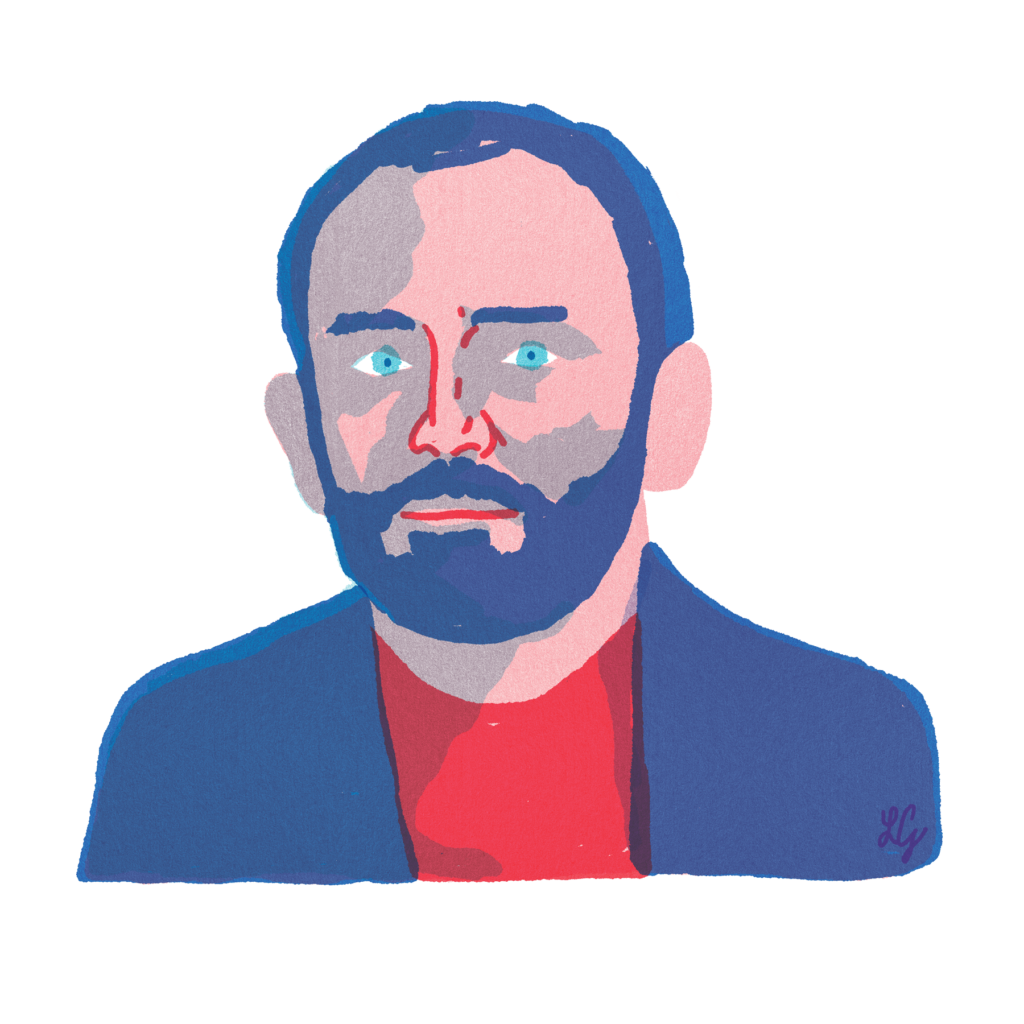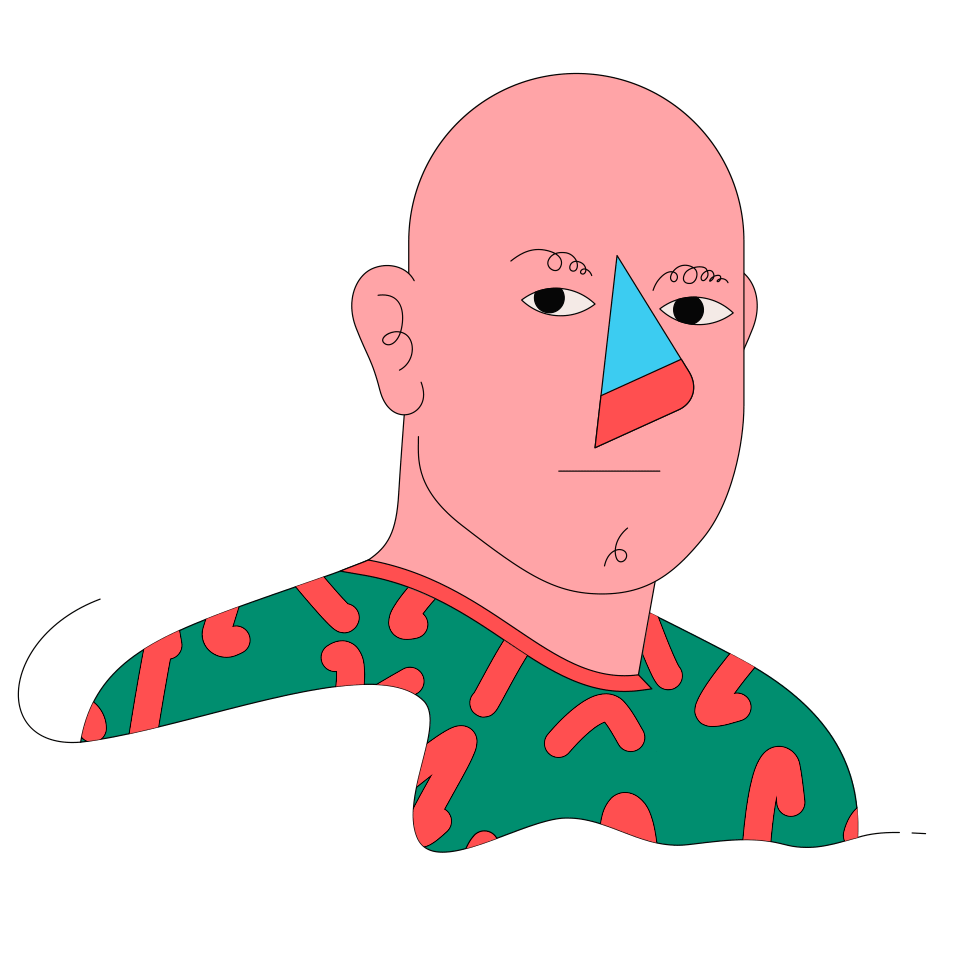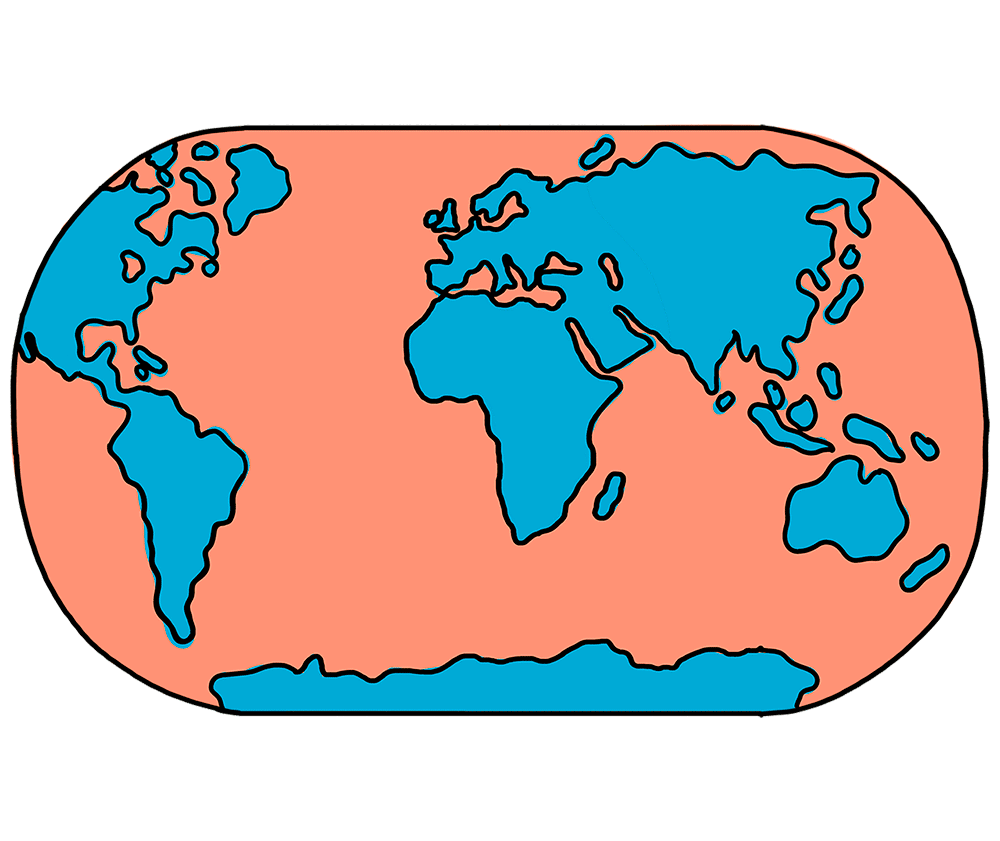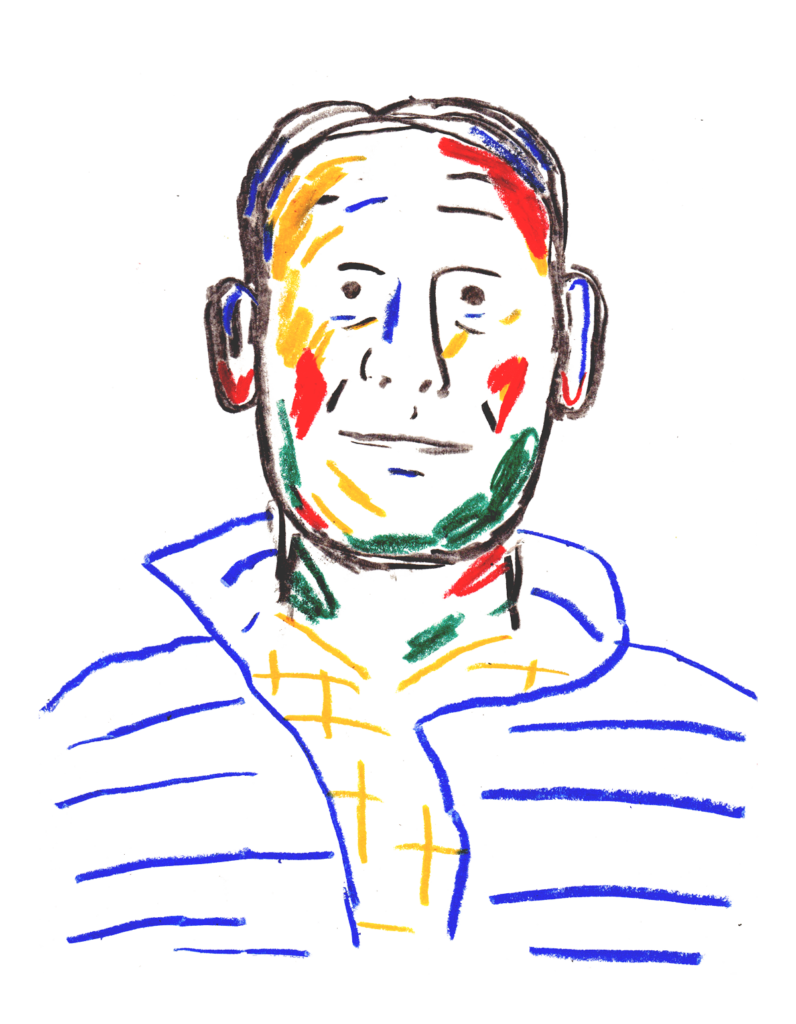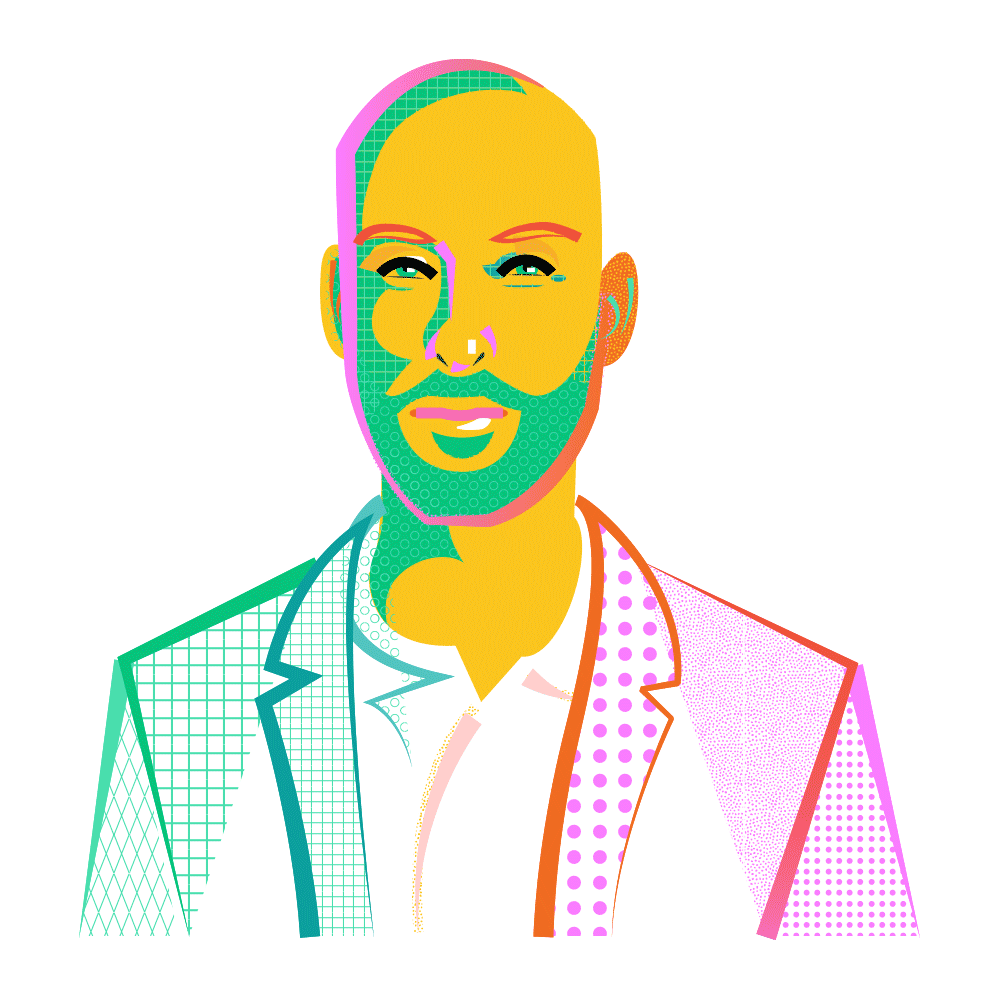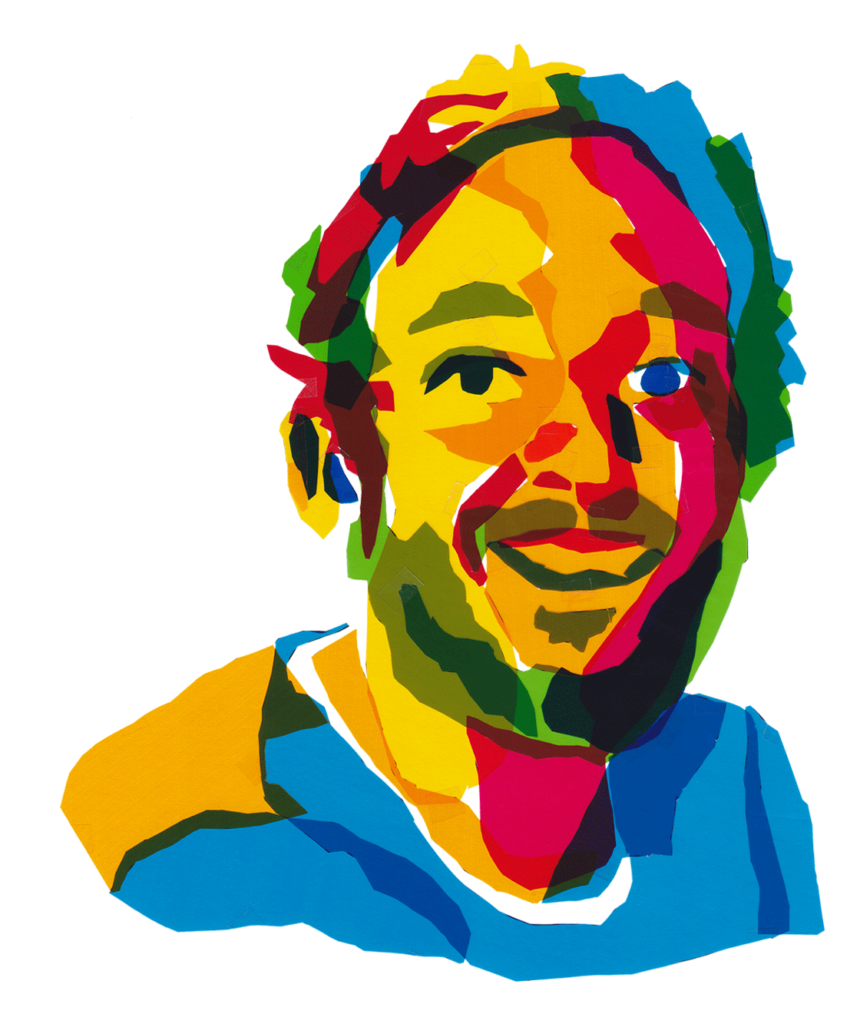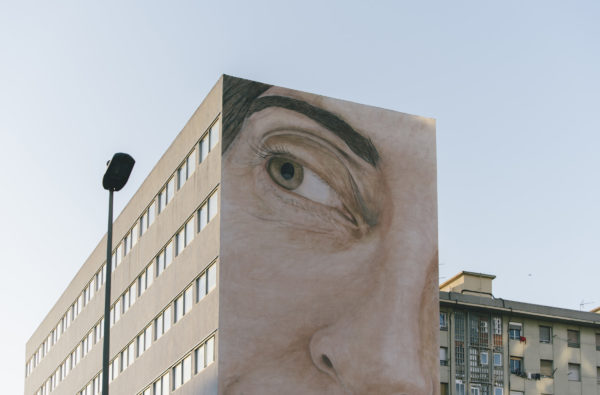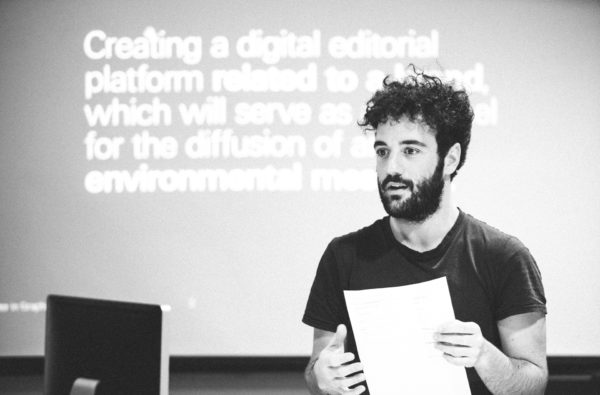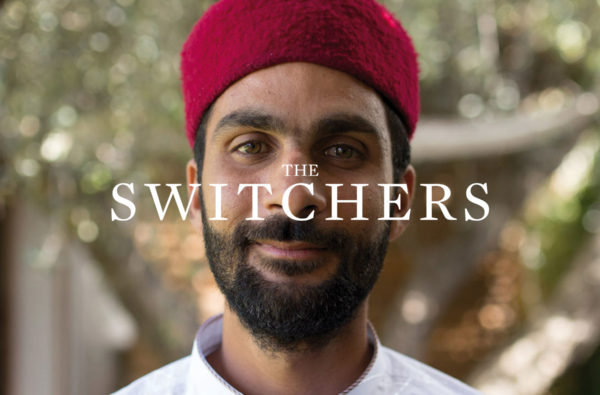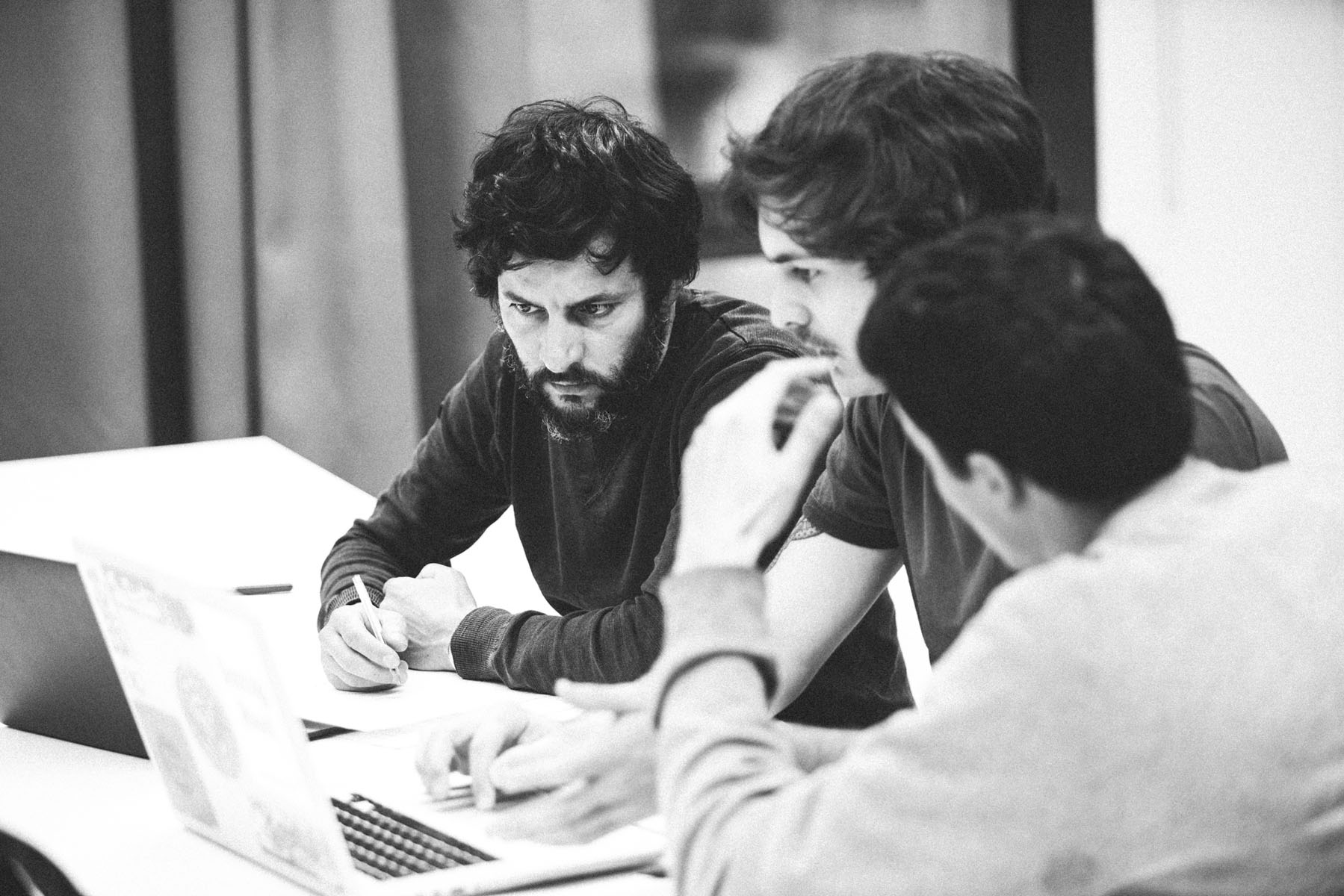Running an ad in The New York Times on Black Friday to tell the world not to buy products just for the sake of consumerism; going organic overnight across their whole cotton supply chain and convincing their customers to accept the higher prices; using a business to inspire and share their knowledge with competitors. These are only a few of the milestones in the history of the outdoor clothing brand Patagonia. Being the long-time chief storyteller of Patagonia, Vincent Stanley is responsible for weaving the narratives behind one of the most inspiring brands in the world. We had a talk with him about environmental consciousness, the power of stories, teasing out the essence of your business, and more.
- Finding the essence of a business
- Talking to your audience
- In praise of authenticity: tourism or traveling?
- Awareness stems from outdoors
- Protecting wilderness
- A global case study
- Activism for brands
- Producing and inspiring
- Responsibility versus Sustainability
- "Don't buy this Jacket"
- Young creatives and circular design
- Global impact and personal satisfaction
- A time to be proud
You are Patagonia’s chief storyteller. How important is a figure like yours in carving the narratives of a company?
Every company has its own story. Every group of people has its own DNA. They are like snowflakes; structurally the same but different. If you are able to tease out what’s unique about your business, if you can communicate that to the customer, that is the basis of it all. Also, when it’s true, it simultaneously serves as internal discipline for the company. A lot of companies think they can be whoever they want to be yet what they really are is what they are strong at: what they know how to do, to manage, and how their customers perceive them. More on Brand Narratives
I do think companies’ executives compare themselves too much. I heard several saying they want their messaging to be like Patagonia’s. This is a mistake. They should figure out what their own story is, their strengths, their aspirations. When you communicate your own story, everybody will understand more about who you are.
A figure like yours helps a company understand what is at its core. I think many companies should learn how to understand what their own calling is in order to find their own way of connecting to the audience.
That’s how good marketing works. Good marketing is also good for the world. When people fully understand who they are and what their responsibilities are, they’re in a much better position to act on them. We can avoid a lot mischief, both environmental and social, when people have a strong idea of what their business is and what they’re about.
You shaped the voice of Patagonia. What’s Patagonia’s language like and where did it stem from?
We’re an outdoor company and we really care about going to wild places. There’s this saying, “Where the hand of man does not linger.” When you’re off the road you have a very different relationship to the world. You become more self-reliant when you’re climbing, kayaking, surfing etc. This feeling of awe and reverence for the real power of the wilderness is key to everything we want to protect. At the same time, in all these sports, there’s a kind of camaraderie, because you rely on your heart and muscles and your own strength, while also being companionable.
The Patagonia voice is also based on a sense of equality, as we’re equals sharing an experience and a reverence for nature. Often a lot of humor also comes in. Facing a very difficult situation brings out the best humor in people. And those are the qualities that have become our voice.
Patagonia is a unique case study in brand communication. You’ve been communicating your real essence since your early days.
The style of our communication was set very early on. It made a great difference that we’re a climbing equipment company. There used to be very few climbers in the world, so when we wrote something in our catalogue, we knew exactly who we were speaking to; a friend, or a friend of a friend. We knew what these people were like, and we spoke to our customers as equals. That’s the style we carried through all along.
Patagonia’s founder Yvon Chouinard started the company by introducing hard steel pitons into the market, metal spikes used for climbing. Yet in the early 1970s, as more people were climbing on the same routes, Yvon and his partner realized that these pitons were damaging rock walls, so the way they were making a living was actually destroying their sport. The investment to replace the whole production of pitons was huge, so they decided to issue a catalogue in which they put a 12-page article on why climbers should switch from pitons to chocks. The effect was remarkable. In nine months time every climber in the country had read the piece.
This taught us that we could speak to our customers as friends and that if we saw a problem and came up with a solution we could persuade others to go along. Climbers didn’t really understand this as a problem before we came out with the article. What we were proposing was a radical shift, and the fact that we were successful gave us confidence when it came to making arguments like switching from conventionally grown to organic cotton, or to start using wet suits without neoprene.
I think it’s really interesting from today’s point of view that a company could do that with a 12-page article back in 1972. In today’s environmental communication, with today’s social network, how has the communication with one’s audience changed?
Technology hasn’t changed the brand’s capacity to tell its story. In those days we used catalogues and so we could tell our story from beginning to end. Nowadays, the primary method of communication is the website, so you never know where and what kind of message a customer is going to read. At the same time, you can also tell a story very deeply and very thoroughly. Whatever you want to get across to a customer, you’ve got room on a website to do so. Social media reinforce this with the capacity to reach customers every day. Technology doesn’t substantially change your ability to reach a customer, but it does affect the frequency and the way you address the customer.
Do you think a new desire and search for the authentic and an environmental consciousness is growing on a global scale?
Yes. Part of the reason we’re successful now is that even those who are not drawn to the wilderness are still drawn to what is authentic and real, because we have so much of modern life. When I walk down the street in the United States, 7 out of 10 stores are the same in every other main street in the country. And this is happening all over the world. People want to see something that’s individual, something they perceive as real, and that has some rough edges. They look for something with substance.
If companies can connect their product and enterprise to something that people are yearning for that’s real, I think that’s a good thing.
The search for authenticity is changing the way we understand travelling. As opposed to mass tourism, everybody seems to look for uniqueness and living the local experience.
Tourism is a very shallow experience in itself because you go to a place and you don’t really interact with it. That’s the difference with going into the wilderness to do a climb or to take a walk. When you’re just visiting a famous place, you have a very passive relationship to the place where you are. You’re in a bubble. I think we should all be having experiences and travels that test us a bit more. More on Post Tourism Nevertheless we won’t stop mass tourism. The only thing we can do is put some limits to it so it doesn’t change the place for the people who actually live there.
Take Venice for example. They lost half its population over the last 30 years. It has 50,000 people living in the city and 20 million tourists, and the city changed completely because there’s no longer a sense of locality. It could be a movie set, because the crowds always gather at the same places. The relationship between tourists and locals should be reciprocal. A place can’t be taken over by those who are only visiting for the day and never come back.
People are going into the wilderness more than ever. Over the last years we’ve been experiencing a huge movement of modern escapism as technology now allows for creativity and work to go beyond the metropolitan spaces. We are reconciling ourselves with the outdoors and finding a new way of living it. This is a great sign: no one would harm the environment if you know what it’s like to experience it for yourself.
Exactly. The only way to get people to care about the environment is to make it real. To be in a space where you can actually feel the connection to nature. Then you want to protect it. I think people connect to these stories. The more individual stories are, the more people can relate to them, I think.
Over the years, Patagonia had a lot of influence and communicative power when it came to casting light on situations and places. In what way is Patagonia a good influence in the world? What did Patagonia manage to change?
We learned one of our key lessons in the early 1970s. We’re from Ventura, a friendly little town in California where they pack lemons and have a lot of oil production. There’s a river that runs right outside our headquarters. The river had been dammed years ago. The Army, which controls the flow of rivers in the US, came and wanted to declare our river dead. Cover it in concrete. We had a public hearing and everyone agreed with the Army until this 25-year old biologist came up saying there was still a lot of life in this river. He showed us slides of 40 different species. He argued we shouldn’t declare the river dead, but instead restore it to life. And this taught us something.
Before we believed nature was a place where you go to play. Now we know this isn’t true; nature is this friendly place where we live and which has really been degraded and spoiled.
We gave the 25-year-old student a desk. When we started to earn money, we also started to give 1% of our sales to environmental organizations. We chose people like him, small but grassroots organizations who were working to save a particular place and who were connected to it. Even today, the groups we work with have few employees and small budgets. Yet they’re incredibly effective because they care about the place that they’re trying to save, the forest or the structure of water, and they’re connected to the local people. That’s the kind of thing we work to protect. And it fits in with our DNA because we’re not a cultural company. We’re not really dedicated to cities. I love them, but the company is connected deeply to wild places and to protecting them.
Does protecting these places feel like a mission to the company?
Yes. Our mission statement is, “Build the best product, causing only necessary harm.” It means using business to inspire and implement solutions to the environmental crisis.
What was Patagonia and the world like when you started working in the company?
Patagonia was still Chouinard Equipment, a small company that made mountain climbing equipment in Ventura, California. We had 10 people working there making pitons and chocks, and the world was a very different place. In 1973, when I started working at Patagonia, the population of the world was about 4.3 million people. Now it’s 7 billion. The size of the world economy turned about five times bigger.
When students go out into the world to become designers or business people, they feel everything is more competitive than it used to be and it’s true. There’s an awful lot more going on. There’s also a lot more pressure on the environment, because adding 3 billion more people on the planet, in this one working life, while also increasing the capacity of the economy by 500%, puts tremendous pressure on all of the resources and different species that live on this planet. So it is a very different world. When I started, Patagonia felt like a laid back Californian company.
How did you end up being Patagonia’s director of philosophy?
I was not a climber or a surfer as my colleagues were. I was hired to type invoices and to pack boxes to ship. Because I didn’t surf, I tended to be the last person in the office. When the waves were good and everybody went out, I would answer the phone. So they said I would become a sales manager. And that was my job for about 20 years. But I was also by vocation a writer, so I did end up writing.
I will jump to another theme, a quite critical one. When Patagonia started out being an activist brand, it was something new, while now, we’re seeing a huge rise of activism in branding and a change in the perception of brands in the last 5 years. What’s your opinion regarding today’s brand activism and the need to take a position?
Every company should be an activist company, but it’s important that if companies are going to take a position they should do so consistently. Their position should also have some relationship with the deep purpose of the company and its project, and it should be exercised every year. That’s how you tell whether people are serious about it. More on Brand Activism
I’m a little concerned that right now brand activism is a fad and that people will use it until it feels overworked and then they’ll go on to something else. If Coca Cola wants to adopt an African country for 13 weeks during the television season, that’s one thing, but if they’re still doing it 20 years from now I’ll pay attention.
There’s a trend of taking position because it somehow works in terms of positioning, reputation, visibility. Do you think it’s required for a company to take position? Do you think this can help backwards, like a company understanding they should do something regarding a cause?
I think so. But again, only if it’s sustained over a long period of time. Companies can invest in movie stars or they can invest in sustainability. But whatever the message is and whatever you’re doing, it should also be, again, related to what your business is. People have asked Patagonia about our position on immigration, but what do we know about immigration? We could formulate a position, but it’s not related to what we know. When we talk about wilderness, people should listen. We’ve been thinking and talking about it and engaging people in it for 30 years.
You have a leading role over one part of the industry in terms of environmental policies. How important is this sharing of everything you learned on the battlefield for Patagonia?
It’s critical. It’s not the whole purpose of the company, but it’s the third element of the mission statement; to inspire others. In order to do so, we have to let other people know what we’re doing. All of this is new: nobody cared 25 years ago. There were no sustainability classes in business schools until about 2003, and nobody graduated till 2008. We need to learn from each other and teach each other. If we find out how to do something in a way that hasn’t been done before, it’s important to pass that information along.
Do you think this is one of the reasons that makes Patagonia still a company and not a foundation?
Exactly. Our essential purpose is to make clothes. I want to sell you a rain jacket or a pair of surf shorts. You’re going to want to buy from me not because I’m a good guy, but because you need a rain jacket or you need a pair of surf shorts.
And if you have a range of companies to buy from, you might buy from Patagonia because you believe in what we’re doing and how we make those shorts and what we say to people when we make them. We’re not a social enterprise.
It’s important that other companies understand we’re a business. And we try to be a healthy one in all ways, financially, as well as in our relationship to our employees, our customers, our communities and to the environment.
Which were the key moments in which you realized that Patagonia was making a difference in the way other companies were acting?
When we hear back from people. About a third of my time I spend with graduate students or entrepreneurs who are starting small businesses, and I constantly hear how Patagonia has changed the way they want to do business. We also actively helped to start the Sustainable Apparel Coalition, which is a consortium of all major footwear and clothing companies who are working to reduce their environmental footprint and to identify environmentally and socially responsible practices for designers in fabrics and processes.
At what stage of the process are we today?
We’re still at a very early stage in which people don’t know. Because of the deep supply chain that we’ve established over the past 14 years in the global economy our impacts as a brand are invisible. Our whole effort has been one to try to increase the visibility of every process that’s involved in creating a Patagonia product. Until you actually understand what’s going on, you can’t make changes to improve it. When you talk to people designing buildings, or in textiles, they say they don’t know what their environmental impact is because nobody’s done the data on it yet.
Are you optimistic to what this change in our industry has done? Can a company exist, in your words, ‘attaining power and recovering graces’?
Yes, it can. I’m optimistic in the sense that I see a lot more people concerned about the same things compared to when we started. Patagonia is a responsible company, but it’s not a sustainable one. Sustainability implies that we would be giving back as much to nature as we’re taking from her. That’s kind of the next step now; regenerating nature and communities rather than just reducing our harm. I believe the combination of making things that people need and looking to solve some of the big social and environmental problems is very powerful. More on Corporate Responsibility
I was struck by the communication around the project Worn Wear. I think it was one of the first times people’s stories were involved in your communication. What is the impact of doing things this way?
The impact is strong. We’re trying to change the relationship people have to the things they buy. Five years ago, we did an ad called Don’t Buy This Jacket. The purpose wasn’t to tell customers to not buy from us anymore, but rather to demonstrate everything we make and everything you buy from us costs the planet more than we know how to repay. When you buy something, you should think about it first; is this something you need? Then, after you buy it, treat it well and if you don’t use it anymore, recirculate it. Worn Wear was a function of that.
We did a 21-city tour in our Worn Wear truck, which looks like a food truck only it has sewing machines. We had a program with schools and gave college students a free piece of clothing. Everything had something wrong with it though because it was second hand and it wasn’t top quality. So before we gave them the clothing, they had to repair what was wrong with it and we showed them how. That changes your whole relationship to a piece of clothing or any product, because you actually work on it.
I got a pack with a broken buckle. They showed me how to take out the seams so I could remove the broken buckle. I asked for a red thread.It makes this pack mean something to me that it didn’t before, because I put my hand to it. I’ve changed it in some way. The greatest connection you can have to a piece of clothing is the connection you have with it in terms of the experience. It’s both when you’ve worn it in the mountains or when you’ve repaired it yourself. It’s about changing that relationship with the customer.
Like the Wabi-sabi philosophy but brought to the outdoor clothing.
Exactly.
Everybody’s talking about the idea of Circular Design based on the collaborative guide from IDEO and the Ellen MacArthur Foundation. Patagonia has been a champion of this idea of exploring new ways to create sustainable long-lasting value in the circular economy for years, from the repairing care guides to the Worn Wear initiative. What are your thoughts on these guides? Do you have any advice for young creatives starting out in this environment?
This thinking is critical for designers. There’s something called design thinking in which the central point is to be holistic, to think about the life of the product from beginning to end and what its impacts are going to be. It’s making sure that every action you undertake has five or six positive results. The thing to remember about circular economy is that recycling isn’t the only virtue. In 2005, we said that by 2010 we wanted to take back everything we had made and recycle it into something of equal value.We discovered however that if we were making something that shouldn’t be made in the first place, there’s really no point in recycling it.
If you’re making poor quality products that have to be recycled very soon, it’s still a huge use of energy. Secondly, there’s a reason the four Rs -reduce, repair, reuse, recycle- come in the order they do in. And it’s those elements of a circular economy that people and designers should pay attention to. When we wrote our design philosophy 20 years ago, we didn’t have ‘repair’ as one of the elements. Now, I think anyone designing anything should.
Do you think we are living a momentum? Do you think that we as communicators, designers, storytellers, writers, should push for this to be an authentic revolution and not just something that is superficial?
Absolutely, yes. I think that for people who are starting out and for creatives, this kind of work really adds a lot of meaning and satisfaction to their life. Looking back over 40 years of working, I’d still say 90% of my work consisted of doing chores: answering emails, checking suppliers, checking to see things are done. Moments of brainstorming and actual creativity are 10% of the whole picture.Making good products that are also solving environmental and social problems is a source of satisfaction which makes your work worthwhile. I see this at Patagonia all the time; people get a satisfaction from work now that’s much deeper than 15 years ago, when our environmental work was less integrated into the daily work of the company.
Do you think there is an increase in demand and that people are more eager to be in a company they are proud of?
Sure. Not everybody’s going to get a job in a place they fully respect, but you can also help as you do your work. You can help create a company that you’ll more fully respect. This will also change the business because businesses are very conscious that millennials want to work for companies that they regard well.
I think it’s much easier to have a sense of belonging when you feel like you can bring your whole self to work. If I have to shut off 70% of what I care about in order to do my job, I’m not going to feel like I belong in a company. If I feel like I can use all of what I care about and my intelligence, my capacity to cooperate with other people is challenged, and I will feel like I belong in a place.




